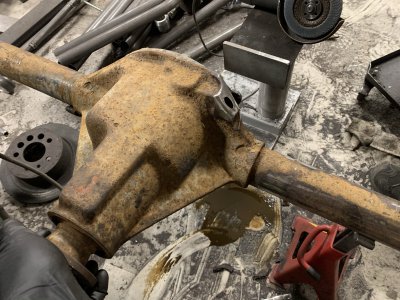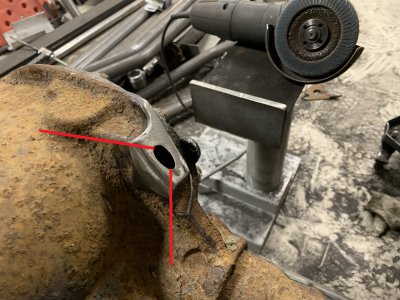- Joined
- May 27, 2016
- Messages
- 3,480
The "close it with a tapped seal" idea is great, but be careful of over-tightening if using anything tapered. Use some white PTFE plumbing thread sealer tape, and screw in gently, until enough that it will stay.I believe as long as you clean the hole very well, and follow the JB-Weld directions (for mixing and set-up time) it would provide a long-term, leak free plug.
How thick is the area with the extra hole?
Another idea:
Could you tap it and use a tapered pipe plug? (Along with thread sealer)
View attachment 359593
-brino
If the region around the hole can be regular enough, then a non-tapered sealing cap plug with a nitrile O-ring seal, or one of those Dowty types with the sealing ring incorporated into the underside of the cap screw head. These are very common pneumatic/hydraulic parts.
I say this because tightening a bolt into a hole in cast iron puts the iron into tension. Cast iron is strong in compression, but utterly feeble in tension.
By coincidence, I happen to be putting J-B Weld to the test (another thread). It does seem strong, and it does hang onto cast iron, and it can be reinforced with carbon fibre or class fibre strands if you want. I am using "MarineWeld" which is claimed to be "Chemical & Petroleum Resistant", and has strength 5020 PSI. This I take to be the tensile force/area at the point it fails. This stuff is the fastest, least stressful, and lowest cost fix. I would try this before any of the others.
The point made by @Nutfarmer is well made, but the thing is broken. You can try any or all of the suggestions, knowing in the end you need to find a replacement. It depends on how rare and precious is the housing. You can't just go fetch another part from the store for a '68 Caddy DeVille!
I am shortly to attempt welding on cast iron myself, though I seek to first have a "practice run" on some old disc brake castings. After consideration, the method will be to slowly heat up the whole part to about 300C, and use E-NiFe-C (55% nickel) rod, made for welding even dissimilar metals to cast iron. This mix apparently alleviates some of the stress shock from cooling with different temperature coefficients, and exploits nickel ability to "wet" adhere to cast iron.
In my case, the casting metal is 50% semi-steel. You can bet that a differential housing will also be of tough semi-steel. No way can it be plain grey cast iron as might be used for a railing ornament. It has to take a pounding from the suspension!
The method will be to heat the whole thing up to about 300C, then lay in welds a little at a time, with pauses to allow the local heat to even out, and not allowing it to cool. When enough weld is on, then lay it in a box of wood ash, or vermiculite (is that kitty litter?), and let cool slowly as possible. Then grind/file back to where I want it to be.
Direct experience from the farmer who lives out back of my place is that when he attempted a cast iron weld with nickel (pure), the weld went on, but cracked immediately it cooled. Undaunted, he just ground out the crack, and tried again. Second time around, attaching to the existing weld, he said it was totally different experience, altogether successful. I dare say casting distortion was not a concern to him!
Last edited:



